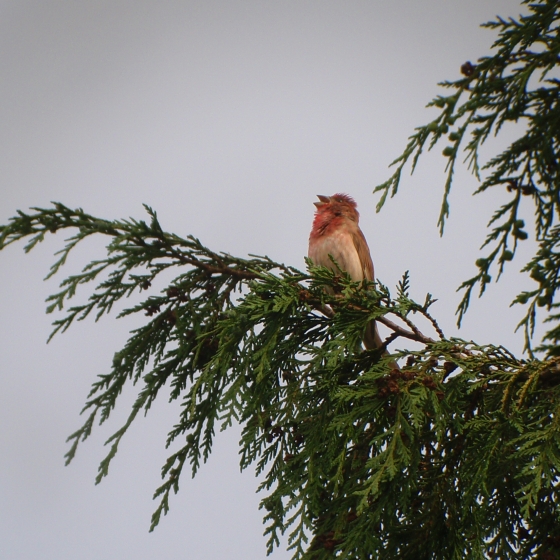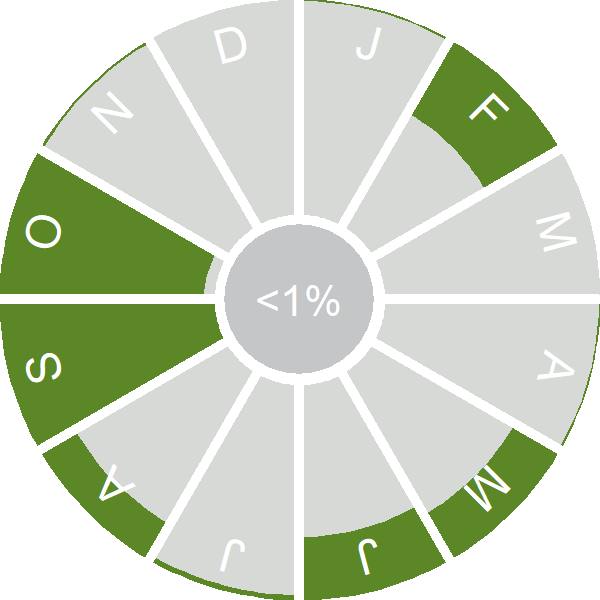Common Rosefinch
Carpodacus erythrinus (Pallas, 1770)
SQ
 SCARO
SCARO  16790
16790

Family: Passeriformes > Fringillidae

Most encounters with this rare visitor to Britain & Ireland will not meet the colourful expectations of the bird’s name, with scarce autumn migrants looking plain and brown.
Pinkish-red singing males have been found very occasionally in the UK, with the first recorded breeding in 1982 in the Highlands of Scotland. The species has bred irregularly since then with Bird Atlas 2007-11 recording possible breeding from around 25 locations, mainly in Scotland.
The Common Rosefinch is most regular as an autumn visitor in the Northern Isles, with birds regularly spending a few weeks in Shetland, and especially on Fair Isle. When studied in their first winter plumage, they are subtly streaked and have an attractive beady black eye.
Identification
Common Rosefinch identification is sometimes difficult.
SONGS AND CALLS
Listen to example recordings of the main vocalisations of Common Rosefinch, provided by xeno-canto contributors.
Song
Develop your bird ID skills with our training courses
Our interactive online courses are a great way to develop your bird identification skills, whether you're new to the hobby or a competent birder looking to hone your abilities.
Browse training coursesStatus and Trends
Population size and trends and patterns of distribution based on BTO surveys and atlases with data collected by BTO volunteers.
CONSERVATION STATUS
This species can be found on the following statutory and conservation listings and schedules.
DISTRIBUTION
Common Rosefinches are sporadic breeders, with the first breeding record being as recent as 1982
Occupied 10-km squares in UK
| No. occupied in breeding season | 27 |
| % occupied in breeding season | 0.9 |
| No. occupied in winter | 8 |
| % occupied in winter | 0.3 |
European Distribution Map
SEASONALITY
Common Rosefinch is a rare passage migrant, with some birds holding territory in late spring, and passage of juveniles in September and October.

Movement
Information about movement and migration based on online bird portals (e.g. BirdTrack), Ringing schemes and tracking studies.
RINGING RECOVERIES
View a summary of recoveries in the Online Ringing Report.
Foreign locations of birds ringed or recovered in Britain & Ireland

Biology
Lifecycle and body size information about Common Rosefinch, including statistics on nesting, eggs and lifespan based on BTO ringing and nest recording data.
BIOMETRICS
Wing Length 
|
Adults | 83.2±2.7 | Range 79–88mm, N=37 |
| Juveniles | 81.8±2.1 | Range 79-86mm, N=90 |
Body Weight 
|
Adults | 23.4±2.3 | Range 19.8–26.9g, N=37 |
| Juveniles | 23.1±2.9 | Range 19.3–28.6g, N=85 |
Feather measurements and photos on featherbase 
CODES & CLASSIFICATION
Ring size 
|
A or B |
Field Codes 
|
2-letter: SQ | 5-letter code: SCARO | Euring: 16790 |
For information in another language (where available) click on a linked name
Links to more studies from ConservationEvidence.com
- Evaluating the English Higher Level Stewardship scheme for farmland birds
- Forestry thinning in commercial conifer plantations has little effect on bird species richness and breeding abundance
- Effects of the Arable Stewardship Pilot Scheme on breeding birds at field and farm-scales
Read more studies about Common Rosefinch on Conservation Evidence >
Would you like to search for another species?








Share this page